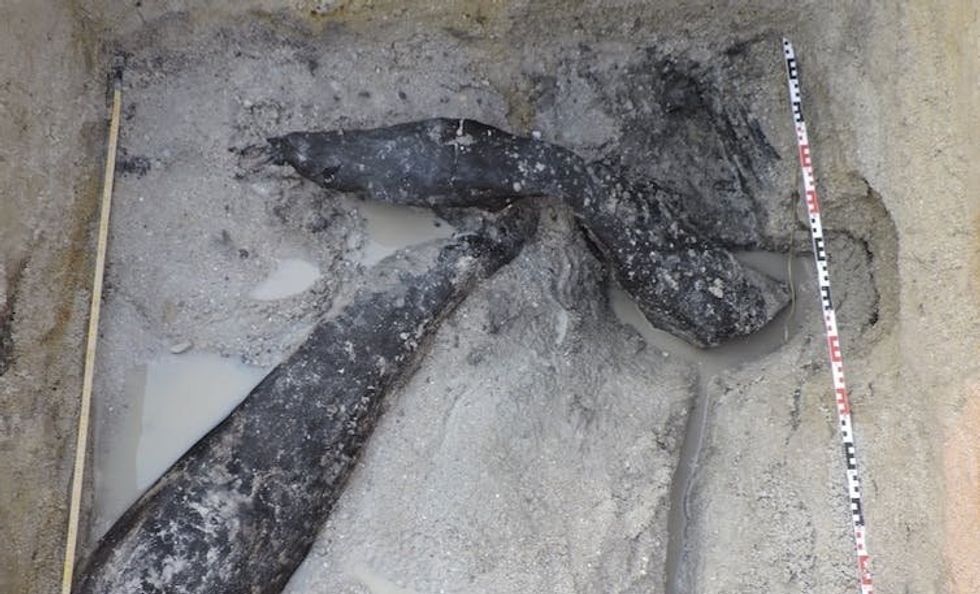Science & Tech
Harry Fletcher
May 13, 2024
Rare 1,800-year-old marble artefacts discovered in shipwreck off Israel
Israel Antiquities Authority Official Channel
One of the wonderful things about science is that we’re always discovering new things that not only expand our knowledge, but also change things we’d taken as a given for many years.
In that vein, it's been revealed that scientists have discovered an artefact dating back 500,000 years ago which ‘rewrites early human history’ and it could completely change our understanding of the earliest days of advanced life on our planet.
New research published inNaturewhich focuses on the finding of a wooden tool in Kalambo Falls, Zambia.
Given the unique geological makeup of the area, which saw flooding add layers of sediments over time, the woodwork item was preserved all this time – and it suggests that certain early species were far more sophisticated than previously believed.
The tool, which was clearly modified for use with notches and tapered ends, stands out among others of the time period.

In fact, it’s evidence that early hominin species were operating wooden tools far before Home sapiens rose to prominence.
The research utilised a dating technique called Infrared Stimulated Luminescence (IRSL). The technique allows experts to analyse the “clock” of minerals inside items, which are affected by background radiation. This way, the amount of energy trapped inside the materials, which resets after being exposed to sunlight, can be used to measure the age.
This way, the researchers were able to establish that the tool is 476,000 years old, and from the Middle Pleistocene era.
It suggests that the hominins were more advanced than previously thought, given that the tool was used long before Homo sapiens emerged. Instead, it’s thought that the species Homo heidelbergensis could have constructed the tool, or an even older human ancestor.
The find could even come to change our understanding of the “stone age” definition, with the level of sophistication in the craft of the tool going beyond what is normally associated with our current understanding of the age.
Lead archaeologist Larry Barham said in the study: “These people were doing something new, and large, from wood. They used their intelligence, imagination, and skills to create something they’d never seen before, something that had never previously existed.”
Sign up for our free indy100 weekly newsletter
How to join the indy100's free WhatsApp channel
Have your say in our news democracy. Click the upvote icon at the top of the page to help raise this article through the indy100 rankings
Top 100
The Conversation (0)














